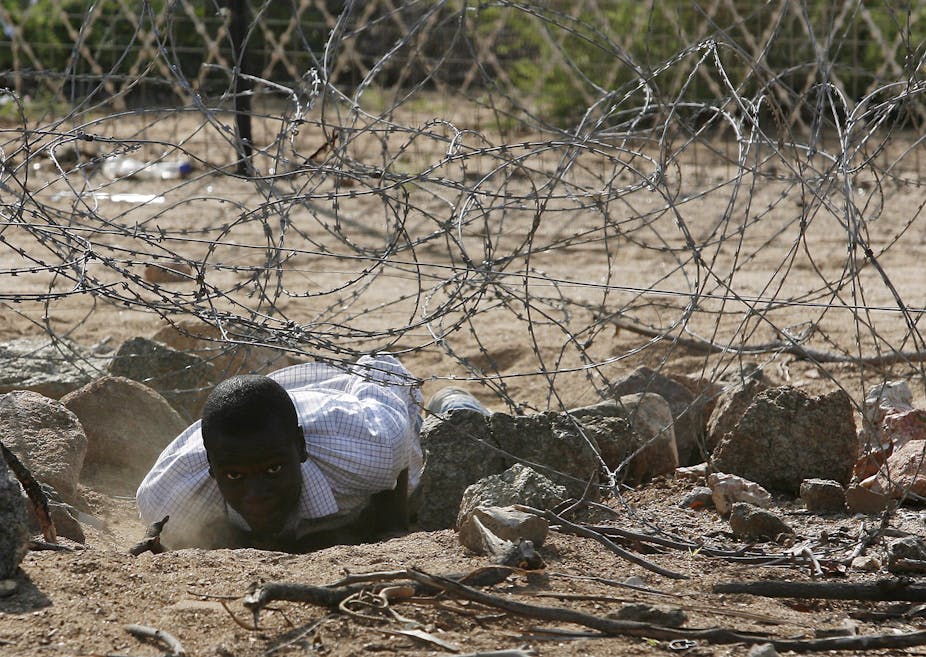Many countries around the world have declared lockdowns in an attempt to curb the sharp rise in deaths from the COVID-19 pandemic.
In South Africa, which has the highest number of cases in Africa, President Cyril Ramaphosa imposed a three week lockdown from 27 March. This has since been extended by two weeks. Other African countries in general, and within the 16-member Southern African Development Community (SADC) region, have followed suit.
Zimbabwe is also in lockdown. Botswana has imposed a state of emergency and lockdown. So has Mozambique, Lesotho, Angola, Democratic Republic of Congo (DRC), Mauritius, Comoros, Madagascar, Seychelles and Malawi. Namibia and eSwatini have declared partial lockdowns.
In Zambia, only Kafue, a town in south-central Zambia and its surrounds, and about 40 km from the capital Lusaka, is in a total lockdown, leaving most of the country uncovered. Similarly, Tanzania has implemented very mild measures, short of a lockdown.
This shows that there’s no uniform lockdown of all the region’s 16 countries in response to the pandemic.
A lockdown means that a nation-state shuts its borders and restricts all forms of movement and business. In the case of South Africa, this has actually meant that people are restricted to their homes, and only workers in the essential services are allowed to travel.
Likewise, all businesses except those involved in essential services, ceased operations.
In my view closing borders in Africa in general, and in the Southern African Development Community region specifically, will not stop the spread of the coronavirus. This is because, by and large, borders in the region are porous.
This means countries in the region need to rethink their approach. The solution, in my view, lies in a coordinated approach, as envisaged in the Southern African Development Community treaty and protocols.
Borders have little power
Borders on the continent were arbitrarily imposed by former colonial powers, and aren’t respected. This includes cross border regions between South Africa and Zimbabwe and Botswana and Zimbabwe in which people have continued to cross the border at unofficial points despite the existence of fences.
In some parts of the region, particularly the contiguous border regions of Zambia, Malawi, and Mozambique, people have long established a strong cross border socio-cultural and economic clout which has diminished the impact of the border.
In the minds and lives of people, the borders do not actually exist. That is why in the contiguous borderlands of Zambia, Malawi, and Mozambique people move in between countries to access various services, such as health services across borders. This is considered acceptable and “normal”.
Read more: Unravelling why some democracies -- but not all -- are better at fighting pandemics
Some borders are not even fenced. In some places the physical “border” is marked by an isolated concrete pillar or beacon a few centimetres above the ground.
People have always disregarded them, moving easily in between countries, in the conduct of their everyday lives in line with their social, economic, cultural and other needs. For instance, at Mwami (Malawi-Zambia border), people simply walk or cycle freely between the two countries.
In such a situation, declaring a lockdown of a country and closing its borders is not an effective way of stopping the spread of the coronavirus.
Coordinated approach
The Southern African Development Community needs to look to its regional integration project for how best to address the COVID-19 pandemic. Briefly, the 1992 declaration and treaty outlines the programmes, projects and activities towards the establishment of a regional community.
Several protocols have been signed to make this a reality. For example, the SADC Protocol on Health was approved by the regional body’s heads of state in 1999, and came into force in 2004.
It encourages cooperation among the member countries on health issues, such as curbing communicable and non-communicable diseases. It also calls for cooperation in managing disasters. Hence, member states need to adopt a regional and coordinated response to such pandemics as COVID-19. An example of this would be to establish a regional fund to deal with pandemics.
Similarly, there needs to be a proactive plan of action, such as concrete procedures in terms of the uniform application of COVID-19 lockdown rules across all states in the region.
Disaster preparedness
There is an urgent need to move beyond political declarations to the actual setting up of systems and mechanisms to enable the region to jointly tackle communicable diseases and other disasters.
Such a proactive approach would entail uniform action by all states in the region, instead of the current disparate responses, which leaves each country to look after its own.
Failure by member states to establish a fully operational regional architecture will mean that it will be impossible to bring the epidemic under control in the region.

